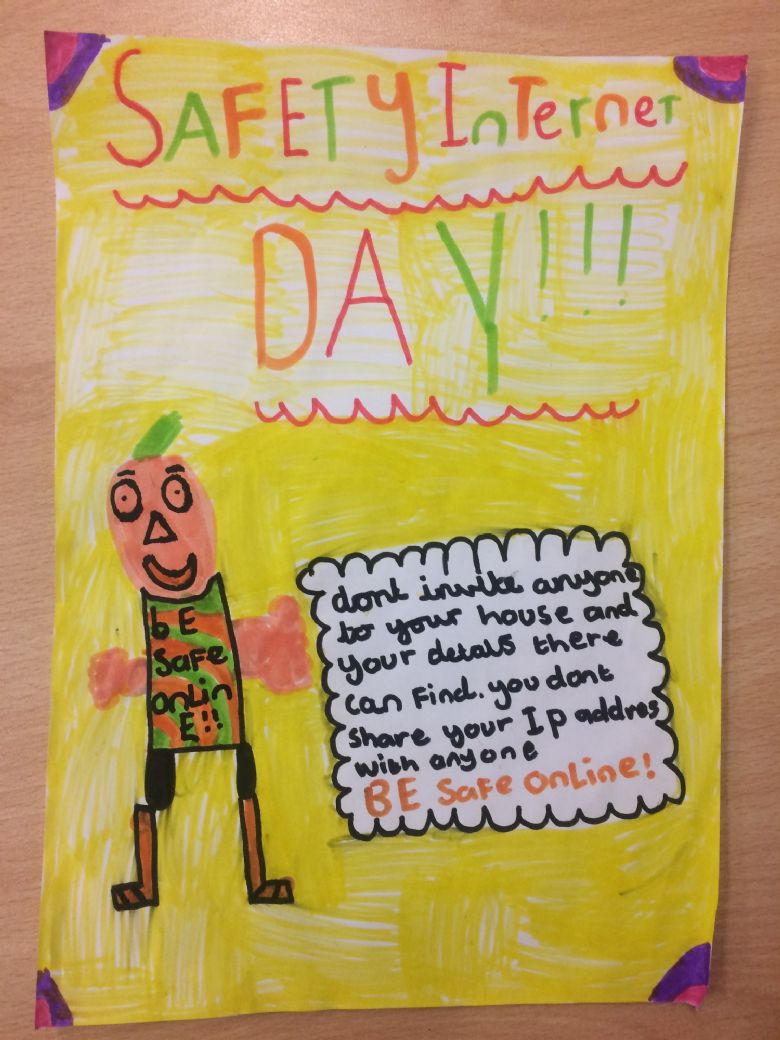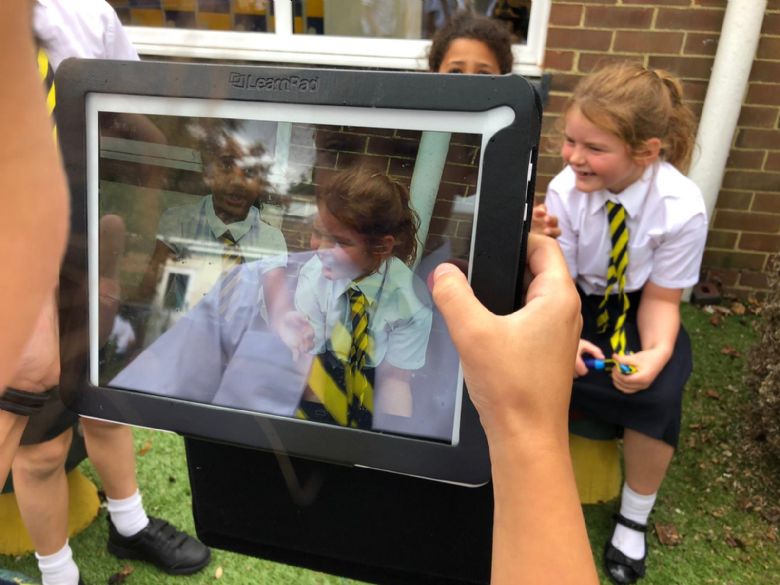Computing

“A good school provides a rounded education for the whole person.
And a good Catholic school, over and above this, should help all its students to become saints….” Pope Benedict XVI, 2010
Computing has become an integral part of our lives. Almost everything we do at school now involves the use of technology:
- online lesson research, teaching plans and resource materials;
- lesson delivery through the use of an interactive whiteboard;
- communication by website, e-mail, instant messaging and text;
- document distribution and storage;
- assessment information analysis;
- production and editing of reports;
- use of laptops, tablets and our immersive learning suite, 'The Space';
- use of innovative decoding equipment including 'bluebots' and 'Inobots'.
Thus, through teaching Computing, we equip children to participate in a world of rapidly changing technology. The teaching of Computing equips our pupils to use computational thinking and creativity to understand and change the world. We teach computer science to enable children to understand the principles of information and computation, how digital systems work, and how to put this knowledge to use through programming. Children are then able to use this knowledge to create their own programs and a range of content. We enable them to find, explore, analyse, exchange and present information. We also help them to develop the necessary skills for using information in a discriminating and effective way. This is a major part of enabling children to be confident, creative and independent learners.
Our objectives in the teaching of Computing are:
- to develop children’s understanding of algorithms, and how to use this knowledge to design, write and debug programs.
- to facilitate the creation, organisation, storage and manipulation of digital content.
- to teach the use of Computing for effective and appropriate communication;
- to teach the application of Computing to children’s learning across the curriculum;
- to explore the value of Computing, both to children and to society in general;
- to examine issues of security, personal safety, confidentiality and accuracy;
- to develop the cross-curricular use of Computing in all subjects.
Teaching and learning style
In teaching Computing, our style is as active and practical as possible. Children are given direct instruction on how to use hardware or software. However, the main emphasis of our teaching in Computing is for children to use technology to help them to progress in whatever they are studying. Delivery is therefore cross-curricular in fashion with your child using Computing where this is a valid and purposeful reason for doing so.
We recognise that all classes have children with a wide range of Computing abilities. This is especially true when some children have access to Computing equipment at home, while others may not. We provide suitable learning opportunities for all children by matching the challenge of the task to the ability and experience of the child.
Equipment
Our school has 52 laptops and 15 LearnPads, all of which are connected to WiFi and to the secure school network, which is accessed by every child through the use of a personal log in and password. Every classroom is also equipped with an interactive whiteboard and projector. All classes have access to digital and flip video cameras and a range of resources such as floor robots, like bluebots and Inobots, and digital microscopes. We also have an Immersive Learning Suite, featuring wall projection, interactive flooring, changeable coloured lighting and scents which are adapted to suit the lesson. We are currently updating our Learnpads to Ipads and we hope to have 40 Ipads in the school by the end of this academic year.
Key elements of the Computing curriculum
- Computer science; programming and computational thinking
- Multimedia presentations and word processing
- Communication and collaboration
- E-safety
- Research and using the internet
- Handling data
- Graphics and digital imagery
- The use of educational software to practise core skills
Computing in the Foundation Stage
We teach Computing in Reception class as an integral part of the topic work covered during the year. As the Reception class is part of the Foundation Stage of the National Curriculum, we relate the Computing aspects of the children’s work to the objectives set out in Early Years Curriculum. During the year the children gain in confidence and start to use Computing to find out information and to communicate in a variety of ways.
Inclusion
We teach Computing to all children, whatever their age, ability and individual needs. Computing forms part of the school curriculum policy to provide a broad and balanced education for all. Through our Computing teaching, we provide learning opportunities that enable all pupils to make good progress. We strive hard to meet the needs of those pupils with special educational needs. We also have some inclusive equipment which helps every child to participate in all activities. For example we have invested in equipment which helps children to visualise their algorithms and therefore enables them to debug more effectively. These resources give all children access to the high-tech equipment that we use across the school.
Using the Internet
Parents and carers are required to give signed authorisation before their child can use the Internet, either in guided or in independent school work. Parents and carers are, however, assured that their child’s use of the Internet at school is always supervised. A record of those children who do not have permission to use the Internet at school is held by the school office.
E-safety
E-Safety is an integral component of the ICT and PSHE curriculum in every year group. Pupils are taught the importance of being safe when using a range of devices, both at home and at school, and learn how to use the internet safely and question the validity of online resources. Communication between pupils, parents and the school is crucial. An open dialogue is actively encouraged to enable the pupils to feel that they can share their experiences online and, importantly, not be judged for doing so.
E- Safety awareness in school aims to develop a set of safe and discriminating behaviours for pupils to adopt when using the Internet and other technologies. Through discussion of safety and other issues related to electronic communication, it is the aim that all children develop an understanding of the use and misuse of Computing. The E-safety Policy is available to all parents.
Safety awareness in school aims to develop a set of safe and discriminating behaviours for pupils to adopt when using the Internet and other technologies. Through discussion of safety and other issues related to electronic communication, it is the aim that all children develop an understanding of the use and misuse of Computing. The E-safety Policy is available to all parents.
For further information please follow the links below:


